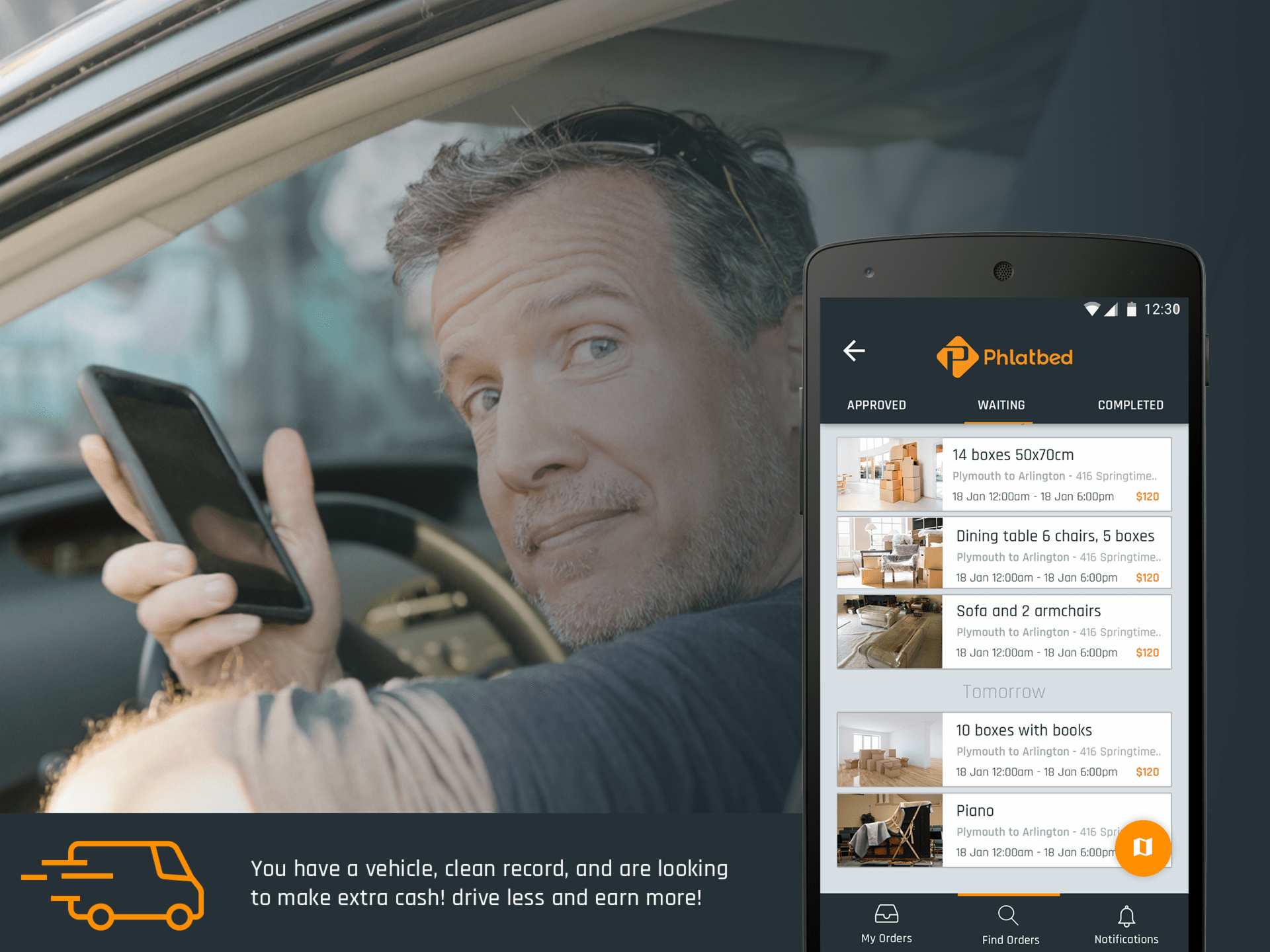Shifting institutional trust to peer to peer trust is increasingly driving economic change, and its collaborative ecosystems.
Platforms such as on-demand moving and delivery apps like Phlatbed, Dolly, and Lugg, are already creating waves across their respective industries. The traditional model consisted of a set pricing structure that you are simply supposed to accept as a consumer, regardless of how positive or negative feedback you have on the company.

Delivery on-demand, from food, to amazon orders, to groceries, and furniture, has become a normal part of our lives. "Uber for Deliveries" as some call it.
Using an on-demand moving & delivery app capitalizes on availability and flexibility. You can track your item in real time, chat with your driver in the app, and get your items where you want it, when you want it. Uber for Delivery has become a very real term the same way "Google it" became eponymous with search.
Since millennials will comprise 40% of the electorate by 2020……we have interesting times ahead. Perhaps the revenge of the nerds is more a revenge of consumers. Simple concepts like idle capital, collaborative consumption, sharing economy, peer to peer business models, and a trust driven economy increasingly appear in our business lexicon….for good reason. A five star provider will always trump a 2 star service provider, intrinsically embedding into the Sharing Economy a meritocratic Collaborative Consumption model.
FACT: 76% of U.S. shoppers are more likely to purchase gifts from retailers that offer same-day delivery.
Unfortunately, many retailers do not have private delivery fleets to deliver customer items on-deman…
Shifting institutional trust to peer to peer trust is increasingly driving economic change, and its collaborative ecosystems.
Platforms such as on-demand moving and delivery apps like Phlatbed, Dolly, and Lugg, are already creating waves across their respective industries. The traditional model consisted of a set pricing structure that you are simply supposed to accept as a consumer, regardless of how positive or negative feedback you have on the company.

Delivery on-demand, from food, to amazon orders, to groceries, and furniture, has become a normal part of our lives. "Uber for Deliveries" as some call it.
Using an on-demand moving & delivery app capitalizes on availability and flexibility. You can track your item in real time, chat with your driver in the app, and get your items where you want it, when you want it. Uber for Delivery has become a very real term the same way "Google it" became eponymous with search.
Since millennials will comprise 40% of the electorate by 2020……we have interesting times ahead. Perhaps the revenge of the nerds is more a revenge of consumers. Simple concepts like idle capital, collaborative consumption, sharing economy, peer to peer business models, and a trust driven economy increasingly appear in our business lexicon….for good reason. A five star provider will always trump a 2 star service provider, intrinsically embedding into the Sharing Economy a meritocratic Collaborative Consumption model.
FACT: 76% of U.S. shoppers are more likely to purchase gifts from retailers that offer same-day delivery.
Unfortunately, many retailers do not have private delivery fleets to deliver customer items on-demand. Furniture stores, antique stores, among other outlets usually would subcontract to third party providers while delivering based on available schedules.
Enter on-demand delivery apps like Phlatbed, Dolly, Lugg, or Buddytruk. Phlatbed connects you to local screened drivers who can help you move stuff, even remove junk and provide general labor. Buddytruk does the same for moving, and Dolly does it in a concierge type way by organizing the labor and delivery. Phlatbed, billed as the “Lyft for moving and delivery” is the simplest of all the industry platforms today. It gives customers and drivers the most visibility, flexibility, the most transparency, and the most control.
Retailers enjoy a completely touch-free interaction where they sell their item, and the customer simply snaps, posts, and names their price. Drivers respond and they simply show up, pick up the item and deliver to their customer.
As mentioned in a prior post, the strongest customer impression ends at the item delivery point. Whether it’s a moving request, small item delivery, or junk removal, a positive experience can instill confidence and trust in your brand, which helps increase return purchases. This ultimately leads to brand loyalty, and again, repeat business!
Cheers!
 RIDEGURU
RIDEGURU

Comments
I think many industries are going to end up going this route. Time is much more valuable now than ever. I even had a parking spot, and laundry done on demand......